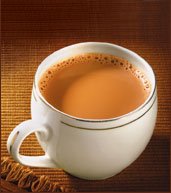So you’re a tea drinker with a good idea of the immense anti-oxidant properties. This ancient brew has cheers for you. It is woderful having this hot beverage to relax yourself at any point of day?
As science confirms many ancient beliefs about tea and the exact nature of anti-oxidants in the leaf. The leaf began its sojourn along the track of human civilization as a modest infusion. Initially prepared from leaves of Camelia sinensis by Chinese and other Asian natives the brew has gained an enormous appeal. As a beverage of choice amid consumers worldwide they are increasing year by year.. It remains challenged in popularity only by coffee that still remains a favorite in US. But with entry into sections like canned options of iced-tea and combination with liquor continues to gain new flavors with time.
Tea: How It Is Sold
Tea is often sold in packages in different varieties- green, black, white, oolong, pu-erh, etc. You also find variations like organically grown blends, sweetened teas, ready-to-drink versions, canned beverage and leaves sold in loose form.
The most popular tea in terms of high sales is black, followed closely by green leaf. England and India are the biggest consumers of black tea, followed closely by Europe, Japan, China and US, though China has its own variants that have lighter textures and unique flavors. North America has registered some of the highest growth in iced-tea drinking. This definitely indicates a sure consumer shift and heightened consumer interest in non-carbonated drinks.
Indian or Chinese?
Undoubtedly Indian and Chinese blends holds sway over a majority of global sales volumes. The Lapsang Souchong of China is the most famed amid the numerous other Chinese brands in use. Yunnan is another, grown and plucked from the Yunnan province.
The Indian tea considered best in quality and aroma is one grown in Darjeeling. It is liked for its light and delicate flavor. In contrast the Ceylon leaf is strong with a sharp aroma. Assam tea is strong and shows readiness to blending with other flavors. You find many Assam variants in market in India and elsewhere.
Darjeeling Orange Pekoe and Ceylon broken-orange Pekoe are highly in demand in England. China alone is reported to produce world’s 18 percent production. Parts of Asia like Japan, Malaysia, Indonesia also grow tea as does Kenya and other countries.
Popular Tea Blends
Earl Gray is a blend that combines a black tea with flavor of bergamot. It is smoky and aromatic with just the slightest touch of citrus. Usually Earl Gray is a blend of Indian with Ceylon leaves. Breakfast tea is stronger than Darjeeling and popular blends in this category are the English breakfast, Irish and Scottish Breakfast blends. If you like the aroma of jasmine try Jasmine tea which has a delicate flavor added of green leaf.
As science confirms many ancient beliefs about tea and the exact nature of anti-oxidants in the leaf. The leaf began its sojourn along the track of human civilization as a modest infusion. Initially prepared from leaves of Camelia sinensis by Chinese and other Asian natives the brew has gained an enormous appeal. As a beverage of choice amid consumers worldwide they are increasing year by year.. It remains challenged in popularity only by coffee that still remains a favorite in US. But with entry into sections like canned options of iced-tea and combination with liquor continues to gain new flavors with time.
Tea: How It Is Sold
Tea is often sold in packages in different varieties- green, black, white, oolong, pu-erh, etc. You also find variations like organically grown blends, sweetened teas, ready-to-drink versions, canned beverage and leaves sold in loose form.
The most popular tea in terms of high sales is black, followed closely by green leaf. England and India are the biggest consumers of black tea, followed closely by Europe, Japan, China and US, though China has its own variants that have lighter textures and unique flavors. North America has registered some of the highest growth in iced-tea drinking. This definitely indicates a sure consumer shift and heightened consumer interest in non-carbonated drinks.
Indian or Chinese?
Undoubtedly Indian and Chinese blends holds sway over a majority of global sales volumes. The Lapsang Souchong of China is the most famed amid the numerous other Chinese brands in use. Yunnan is another, grown and plucked from the Yunnan province.
The Indian tea considered best in quality and aroma is one grown in Darjeeling. It is liked for its light and delicate flavor. In contrast the Ceylon leaf is strong with a sharp aroma. Assam tea is strong and shows readiness to blending with other flavors. You find many Assam variants in market in India and elsewhere.
Darjeeling Orange Pekoe and Ceylon broken-orange Pekoe are highly in demand in England. China alone is reported to produce world’s 18 percent production. Parts of Asia like Japan, Malaysia, Indonesia also grow tea as does Kenya and other countries.
Popular Tea Blends
Earl Gray is a blend that combines a black tea with flavor of bergamot. It is smoky and aromatic with just the slightest touch of citrus. Usually Earl Gray is a blend of Indian with Ceylon leaves. Breakfast tea is stronger than Darjeeling and popular blends in this category are the English breakfast, Irish and Scottish Breakfast blends. If you like the aroma of jasmine try Jasmine tea which has a delicate flavor added of green leaf.




